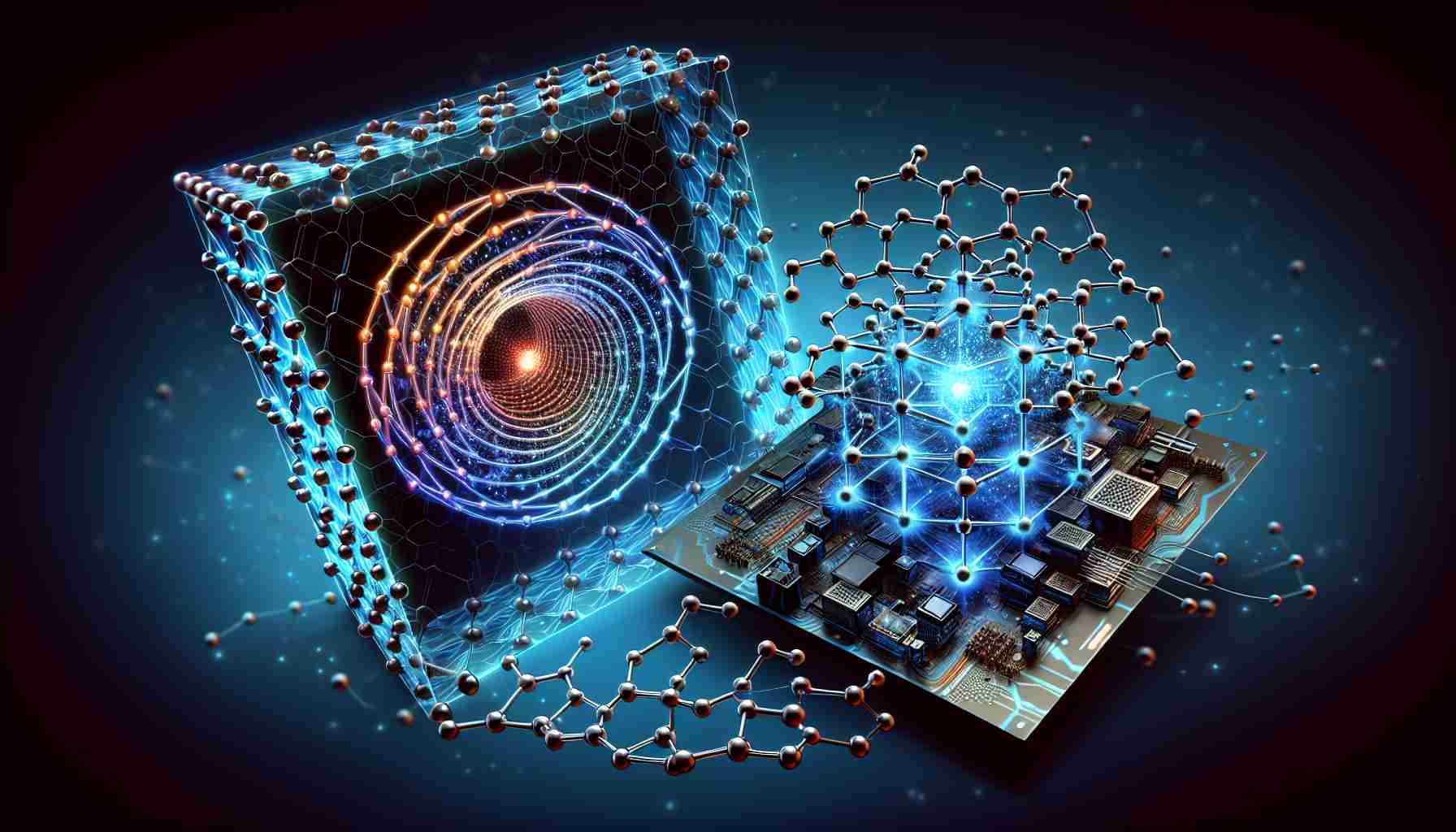- Scientists at the University of British Columbia have discovered a novel quantum state in twisted graphene, potentially impacting quantum computing.
- This state results from creating moiré patterns by twisting layers of ultra-thin graphene, affecting electron behavior.
- Twisted graphene exhibits an insulating core with conductive edges, crucial for advancing qubit technology in quantum computing.
- The electron behavior may lead to more efficient quantum logic gates and data processing.
- Potential applications extend to fields like energy storage and advanced materials.
- Challenges in practical application include refining production and manipulation techniques for twisted graphene.
- This discovery invites further exploration with the promise of significant technological advancements.
In a groundbreaking leap into the unknown, scientists at the University of British Columbia and their esteemed collaborators have unveiled a mesmerizing quantum state in twisted graphene that could forever alter quantum computing. Picture electrons, immobilized in a perfectly ordered ballet, yet somehow dancing along the edges of this remarkable material. This spectacular feat is achieved through the creation of moiré patterns, a result of precisely twisting layers of ultra-thin graphene, which stirs the electrons into this novel state.
The Heart of the Discovery
Within this unique configuration, twisted graphene unveils its true magic: an insulating core with edges that conduct electricity freely. This duality not only intrigues researchers but also ignites the imagination about future computing possibilities. As electrons maintain their frozen elegance in the core, their journey along the edges suggests a groundbreaking advancement for quantum computing’s very foundation — the coveted qubit.
Promises and Possibilities
The behavior of these electrons holds the key to unlocking unprecedented computational power, potentially paving the way for more efficient quantum logic gates and superior data processing. The implications stretch beyond computing; imagine enhancements in fields as varied as energy storage and advanced materials, where efficient electron transport could lead to remarkable innovations.
Challenges on the Horizon
However, the path to practical application is not without hurdles. Working with twisted graphene is intricate, demanding refinements in production and manipulation. As scientists delve deeper, their quest is likely to unearth the perfect blend of stability and functionality required to seamlessly integrate this discovery into our technological fabric.
In essence, the revelation of twisted graphene’s quantum state is a pivotal chapter in our technological revolution, one that beckons further exploration and promises a future replete with innovation.
Quantum Revolution: Twisted Graphene’s Dance of Electrons May Reshape the Future
Understanding the Innovation in Twisted Graphene
In a significant milestone, scientists at the University of British Columbia have uncovered a novel quantum state in twisted graphene, a discovery that may redefine the basics of quantum computing. By twisting layers of graphene into moiré patterns, researchers have orchestrated a state where electrons are both immobilized and free-moving, creating a new frontier for qubit development.
Key Questions and Answers
# What Are the Practical Applications of Twisted Graphene’s Quantum State?
The potential applications of this discovery are extensive. Twisted graphene could revolutionize quantum computing by offering a reliable platform for creating qubits, the fundamental units of quantum information. Moreover, the technique could also influence other fields such as energy storage and material science, where efficient electron transport is crucial for innovation.
# What Challenges Do Researchers Face in Using Twisted Graphene?
The primary challenge lies in the production and manipulation of twisted graphene. Ensuring stability and precision in creating moiré patterns requires advanced techniques and resources. Additionally, integrating this technology into existing systems poses another layer of complexity that needs to be addressed for practical applications.
# How Does This Discovery Impact the Future of Computing?
The discovery of twisted graphene’s quantum state marks a pivotal shift towards more efficient quantum computing frameworks. By enabling better control of electron movement, this research could lead to more powerful quantum logic gates and faster data processing capabilities, significantly enhancing computational power.
Useful Links
For further insights into advancements in quantum research and graphene technology, you may refer to:
– University of British Columbia
– The Graphene Council
– IBM (notably involved in quantum computing)
Future Prospects and Implications
The unveiling of this mesmerizing quantum state in twisted graphene represents a cornerstone in technological advancement. As researchers continue to explore its potential, the implications for various industries are profound. Not only does this discovery hold significant promise for transforming quantum computing, but it also opens new paths for sustainable energy solutions and high-performance materials.
With the hurdles of production and integration looming, the scientific community must rally to explore, refine, and harness this breakthrough, steering humanity toward a future filled with unprecedented technological marvels.













